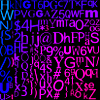Quote: Original post by DauntlessCrowd
The endpoints will not collide (no polygons are formed) but they can intersect. Why would a vertex from crossing segments be added twice? I can see how this would be the case if they have the same endpoint, but not when they simply cross ?
Draw the following situation:
A=(0,0)
B=(10,0)
Line L1=x_1->y_1=(0,5)->(5,-5)
Line L2=x_2->y_2=(0,-5)->(5,5)
Now, when trying to find the neighbors of A to start with, you get that both L1 and L2 intersect A->B, i.e. L := {L1, L2}. Then you pick all their endpoints for further processing, V:= {x_1, x_2, y_1, y_2}. Now A->x_1 and A->x_2 are unobstructed, and are added to F, like they are supposed to. But then, you find that L1 intersects A->y_2 and L2 intersects A->y_1, so if you don't keep any track of these additions, you'll add L1 and L2 again to L, and add the same endpoints to V again, and will end up looping forever. To break this loop, don't add to V any endpoints that have been added to it in an earlier iteration, so you'll end up discarding y_1 and y_2 from being visible from A.
Quote:
Also: "L:= the set of segments that intersect C->". Is this done by brute-forcing?
If you've got lots of lines (>50), I think you might fare better by constructing a quadtree or a 2D kD-tree to accelerate the intersection tests.
Also you might try a structure where you store the lines sorted by increasing x or y-coordinates to be quickly able to cull out lines that possibly can't intersect.
Even if doing brute-forcing, you can exploit the observation you said that after passing line i, lines 0->i-1 don't need to be considered.
It's hard to tell which of these would be the fastest in practice.








